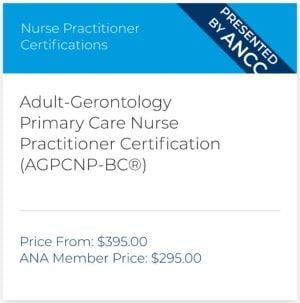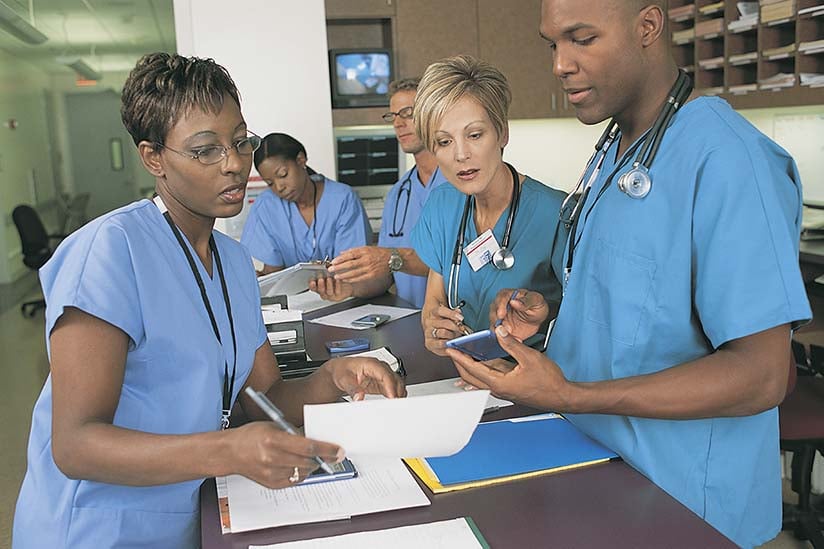Safety Strategies Every Nurse Leader Needs to Know
3 min read
Establishing a culture of safety in health care is essential to the security and well-being of your patients, staff, and organization. Effective nurse leaders embrace safety protocols that ensure their organization delivers a secure, protective environment that prioritizes patients and caregivers.
Establish Effective Communication Protocols
Open dialogue and team collaboration are ways nurses can improve patient care. Establishing a solid rapport with patients and listening to their concerns can help prepare the nursing staff to identify potential safety issues.
Clear communication within and across teams is essential. When nurses, physicians, and support staff collaborate on patient care, they can clarify roles and responsibilities and eliminate potential mistakes or misunderstandings. Shared communication is especially crucial during shift changes. Transitions require smooth handoffs of a patient’s records, medication updates, and ongoing treatment plans. Make sure to also communicate with your health care team and ask about and quickly address their safety concerns. Communication with your facility’s safety professionals, risk managers, and employee health providers is essential to understanding and preventing safety lapses, accidents, and injuries.
Stay Current on New Procedures and Equipment
When new procedures are being planned, such as switching from paper records to electronic files, it’s essential to thoroughly train staff before implementation. The same is true with new equipment. Proper training on a device is essential before it’s put into use. Consider step-by-step directions on using new equipment for training and as a refresher for staff.
Understand and Follow Regulatory Safety Guidelines
To promote a culture of safety in the health care field, nurse leaders ensure staff members adhere to guidelines and recommendations established by the American Nurses Association (ANA) as well as the Centers for Disease Control and Prevention (CDC), the Occupational Safety and Health Administration (OSHA), The Joint Commission, and The Centers for Medicare & Medicaid Services (CMS). These organizations provide guidelines for infection control measures, accurately documenting patient records, implementing proper medication safety guidelines, and cover many additional topics to promote a culture of safety in health care.
Utilize Evidence-Based Practice
A nurse’s role in patient safety involves keeping up with the latest research findings from reputable sources, including clinical practice guidelines and journals. Nurses can provide safer patient care and better outcomes by learning how to incorporate evidence-based practice into daily routines.
For staff safety, familiarize yourself with your unit’s staff injury records, and speak with the person who maintains your facility’s OSHA 300 Log of recordable illnesses and injuries. This will give you vital information on the number, type and severity of the injuries reported in your unit and help you better target prevention efforts.
Be Diligent and Proactive
Nurse leaders must always remain attentive to potential risks and safety issues within their unit. They should encourage their staff to report incidents that could harm patients, staff, and others. Fostering an open communication environment empowers nurses toward corrective actions.
Think Like a Safety Professional
Safety professionals work hard to ensure untoward events never happen. They do this by using the Hierarchy of Controls for hazards in the workplace. Whenever possible, these safety experts remove the risk (elimination). If they can’t eliminate it, they can try to switch the hazard to something less harmful (substitution). If that isn’t possible, they can take measures to keep people away from the hazard (engineering control) or change how people interact with it (administrative control). The least effective method is using personal protective equipment (PPE). Health care professionals used all these methods during the pandemic to combat COVID-19. They separated suspected COVID-19 patients from non-COVID-19 patients, used isolation rooms with negative airflow, non-essential staff worked remotely, and frontline caregivers wore isolation gowns and N95 masks.
Initiate a Workplace Safety Response Team
Assembling a multidisciplinary response team with staff representation throughout the organization advances a safe culture in health care. Getting perspectives on safety-related issues from a diverse group reinforces teamwork and collaboration and ensures all voices are heard. Be sure to collaborate with your current safety committee and security team.
Manage Workloads and Staff Burnout
When nurses are overworked, stressed, and fatigued, errors are bound to happen. Nurse leaders must recognize the signs of fatigue and burnout that can compromise patient safety and take steps to alleviate these issues. Nurse leaders can be the support system their staff and patients deserve by advocating for flexible schedules, wellness programs, and adequate staffing.
Implement Safety Protocols
There are several ways to establish a culture of safety in the nursing environment. Nurse leaders can implement protocols that put the safety and well-being of their staff and patients at the forefront.
Patient Identification Procedures
Ensure strict protocols are in place for accurate patient identification. Incorporating a two- or three-step proof of identity before administering medications or care can help avoid potentially serious mistakes.
Fall Prevention
A fall can be devastating for a patient with compromised health. Establish strategies for preventing falls, such as assessing and monitoring high-risk patients, using assistive equipment, and keeping patient surroundings free from clutter and hazards.

Safe Medication Administration
Every nurse learns the “five rights” of administering medication through education and training. This safety protocol covers:
- The right patient
- The right drug
- The right dose
- The right route
- The right time
By strictly adhering to this protocol, you can eliminate medication errors. Additional procedures, like double-checking drug orders and using barcode scanning systems, further reinforce a safety culture in healthcare.
Sharps Injury Prevention
The safe use and disposal of sharps is a critical health and safety issue, and blood-borne pathogens present a significant level of risk in the health care work environment. It’s essential to review and update your sharps injury prevention program annually.
Safe Patient Handling
Injuries and musculoskeletal disorders (MSD) are often caused by manually lifting patients, and nurses are at high risk every day. MSDs are responsible for more lost work time, long-term medical care needs, and permanent disabilities than any other work-related injury. Having a robust Safe Patient Handling program is essential to prevent patient handling injuries.
Workplace Violence Prevention
Workplace violence (WPV), incivility, and bullying in the workplace are serious issues in nursing. This under-reported epidemic has devastating results on the health care industry. Studies show that WPV can affect the quality of care and outcomes, contribute to the development of psychological conditions, and reduce the RN's level of job satisfaction and organizational commitment. Find support and resources to improve your WPV Prevention Program.
Nurses are frontline health providers and face daily safety risks. By training and empowering your nursing staff to advocate for protecting their patients — and themselves — you’re fostering a caring and transparent culture of safety that instills greater staff satisfaction and better patient outcomes.
Explore more safety tips from ANA’s Health & Safety resources and the ANCC Pathway to Excellence team.
Images sourced from Getty Images


